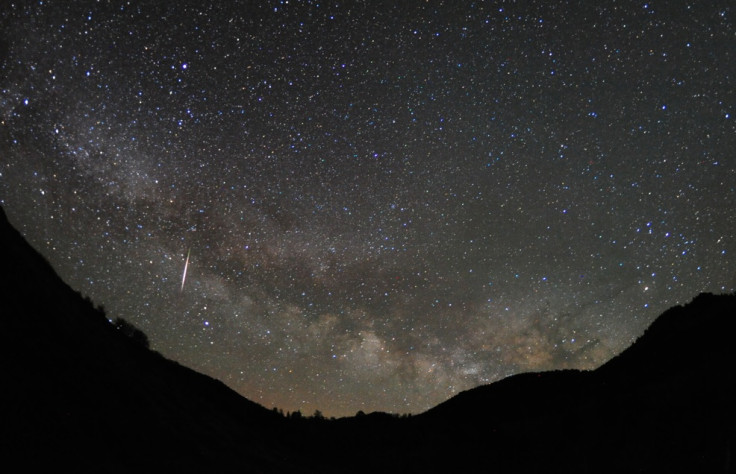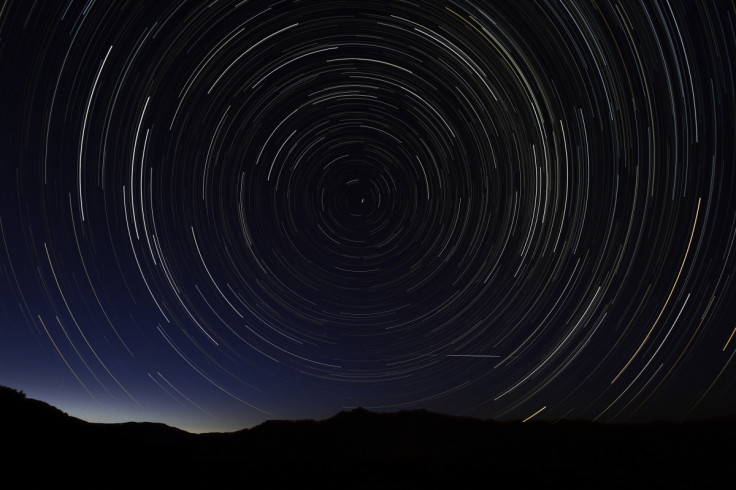Lyrid meteor shower 2015: Where to watch shooting stars in UK, US and live online

The night sky will light up with a brilliant display of shooting stars over the next few days, as the annual Lyrid meteor shower makes its appearance for 2015. Considered the oldest-known meteor shower, the Lyrids will peak on 22 and 23 April, with stargazers able to spot between 10 to 20 meteors per hour.
Typically the first good meteor shower of the year, the Lyrids are visible from most parts of the world, although the timing this year may favour Europe. According to the Slooh Community Observatory, which will host a live stream of the event on Wednesday, 22 April 2015, it is set to be a good year for the Lyrids because the moon will be a slender waxing crescent and will not obscure the view of the meteor shower.
What are the Lyrids?
The April Lyrids have been observed for the past 2,600 years. They are the strongest annual shower of meteors from debris of a long-period comet, mainly because as far as other intermediate long-period comets go (between 200 and 10,000 years), this one has a relatively short orbital period of about 415 years.
The source of the shower is particles of dust shed by the long-period comet Comet C/1861 G1 Thatcher. As the comet sheds debris, the fragments of rock and dust strike the Earth's upper atmosphere at around 110,000 miles per hour, vaporising the debris and creating streaks of light. Sometimes, Earth may pass through a thick clump of comet debris, meaning more meteors will be visible.
Lyrid "fireballs" are created when brighter meteors cast shadows for a split second, leaving behind smoky debris. The radiant of the shower is located in the constellation Lyra, near the brightest star of the constellation, Alpha Lyrae, or Vega. The Lyrids can appear anywhere in the sky.

Why do the shooting stars leave behind a glowing trail?
Shooting stars are not actually stars but fast-moving fragments of rock and debris left behind by a comet, and as the Earth moves around the sun, some of these pieces are pulled toward Earth by gravity. Around a quarter of the meteors produced during the shower will leave behind an ionised gas trail that glows for just a few seconds.
When a meteor enters Earth's atmosphere it is moving so fast that its atoms collide with air molecules and electrons are 'knocked' loose - creating free electrons and positively charged ions. As the shooting star passes, the negatively charged free electrons are attracted to the positively charged ions and combine with them. When this happens energy is released in the form of light, creating the glowing trail behind shooting stars.
Where can you watch the meteor shower in the UK?
It is important to find somewhere will as little light pollution as possible and remember to wrap up warmly. You can also watch the event in the comfort of your own home, via the Slooh Community Observatory.
Below are various dark sky reserves and viewing areas popular with UK astronomers. You can find others using the Dark Sky Discovery website.
London: The WaterWorks Nature Reserve, between Clapton and Leyton Midland Road rail station.
Manchester: Heaton Park is the largest municipal park in the city and contains an astronomy club.
Birmingham: Warley Woods is accessible by bus or car from the city. Those driving should take the A456 Hagley Road westbound from the centre.
Newcastle: Northumberland National Park is an internationally designated Dark Sky Park.
Cardiff: Brecon Beacons is a fantastic area for stargazing as it offers some of the darkest skies in the UK.
Belfast: Oxford Island National Nature Reserve is around 25 miles from the city, located on the shores of Lough Neagh.
Edinburgh: The Royal Observatory, in the Hermitage of Braid, is a good place to try and spot a shooting star.
Where can I watch the meteor shower in the US?
Pennsylvania: Cherry Springs State Park is a gold-certified International Dark Sky Park, one of only a handful in the US. There is a night sky viewing area, located north of Route 44, which is always open.
New York: The Carl Schurz Park on the Upper East Side is the home of the Amateur Astronomers Association on Friday evenings.
California: Death Valley National Park is also a gold-certified International Dark Sky Park, with very little artificial light within its 3.4 million acres. Another good location, the Templin Highway in Angeles National Forest, is a 45 minute drive from downtown LA.
Philadelphia: The Tuckahoe State Park is two hours out of the city and is a good place to stargaze.
Arizona: The Kitt Peak National Observatory, near Tucson, is home to the world's largest collection of optical telescopes. The clear, dark skies of the Sonoran desert are a famous favourite for astronomers.
Utah: Bryce canyon has very little light pollution. Its skies are best seen during new moons, when the Milky Way and over 7,000 stars can be seen with the naked eye.
Illinois: The Hickory Knolls Discovery Centre in St Charles is a nature conservatory and a Dark Sky Park.
New Mexico: Chaco Culture National Historical Park has more than 4,000 prehistoric archaeological sites and is a great location to try and spot the Lyrids.
Texas: The Big Bend National Park in west Texas has gone to some lengths to keep its International Dark Sky status, including by changing the lighting to shielded LEDs.
Alaska: The Denali National Park and Preserve has minimal light pollution and high altitudes, and also offers incredible views of the Aurora Borealis.
© Copyright IBTimes 2024. All rights reserved.







